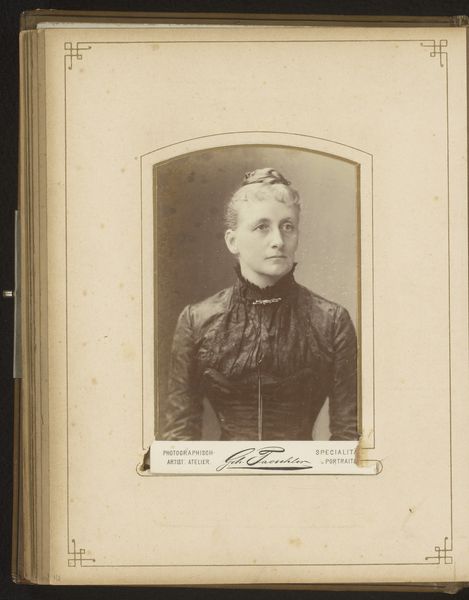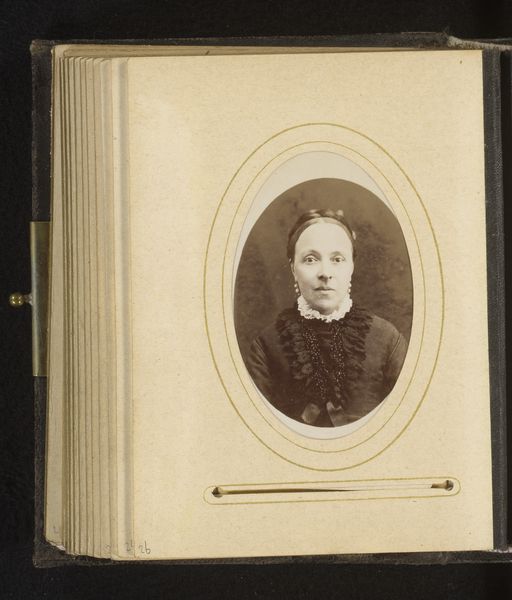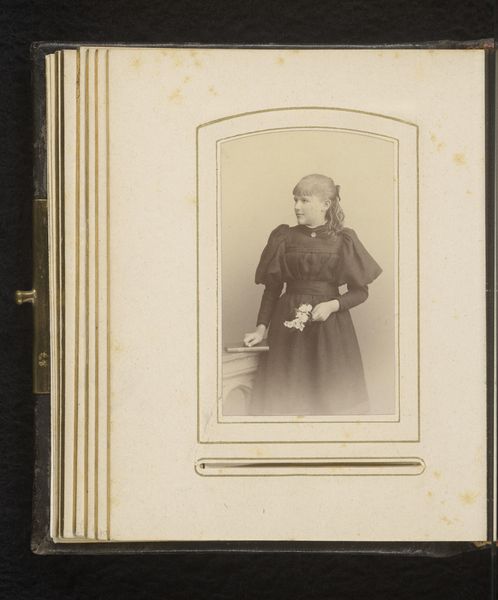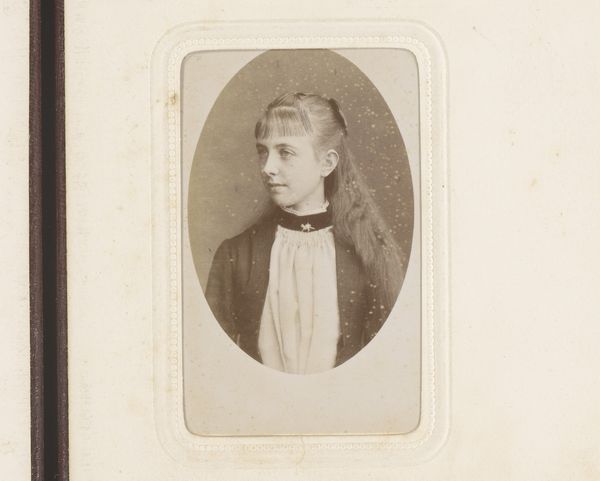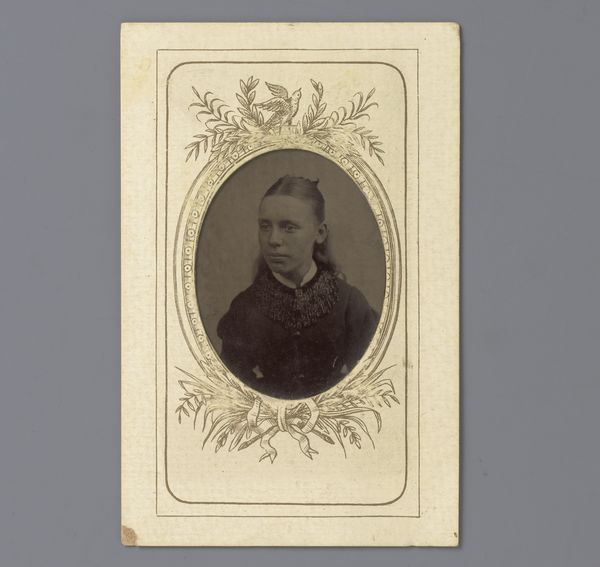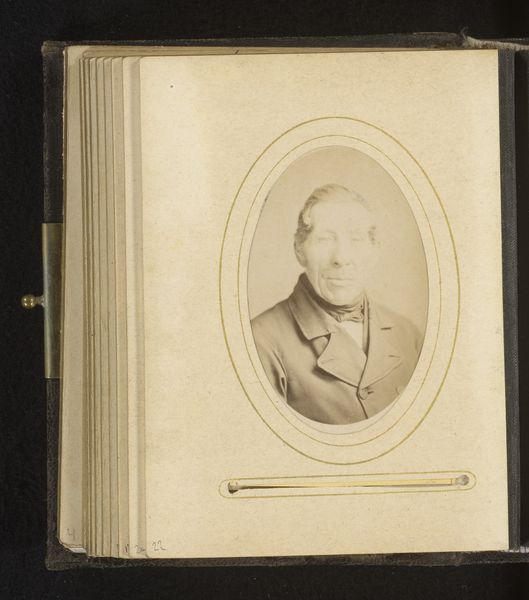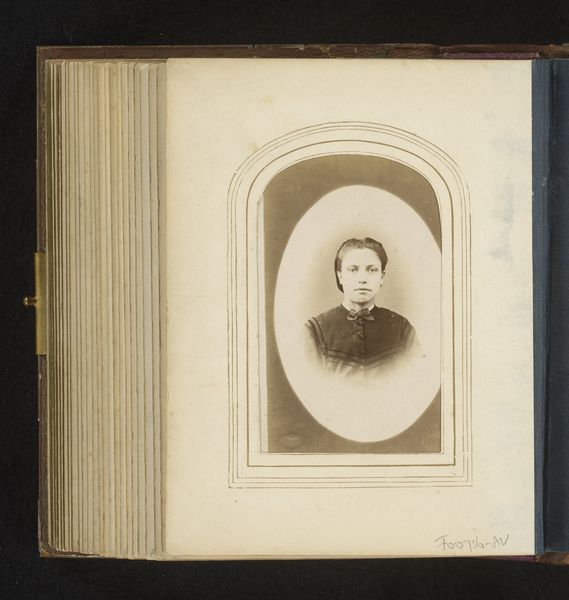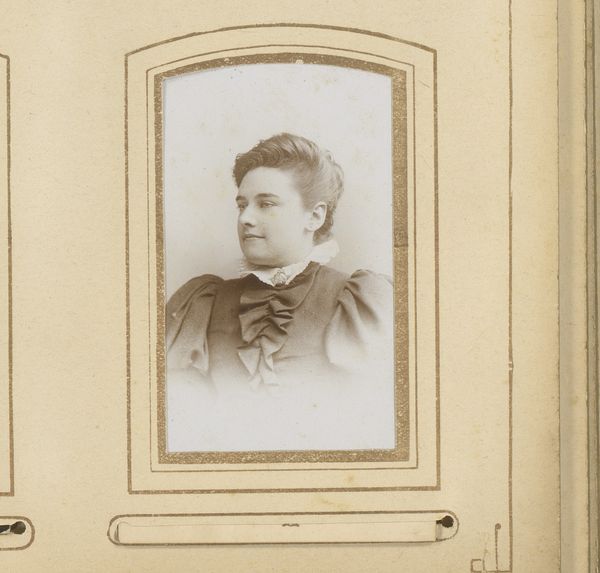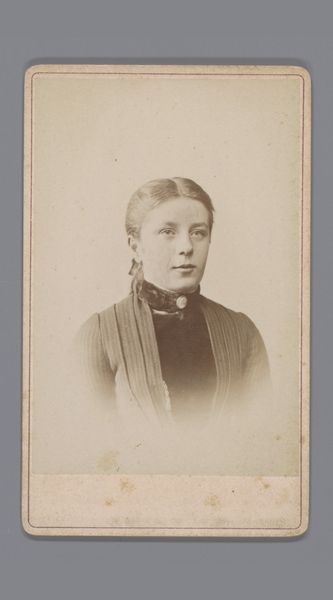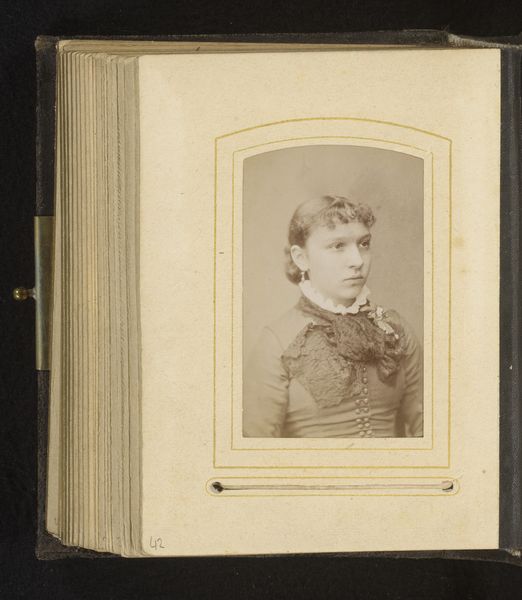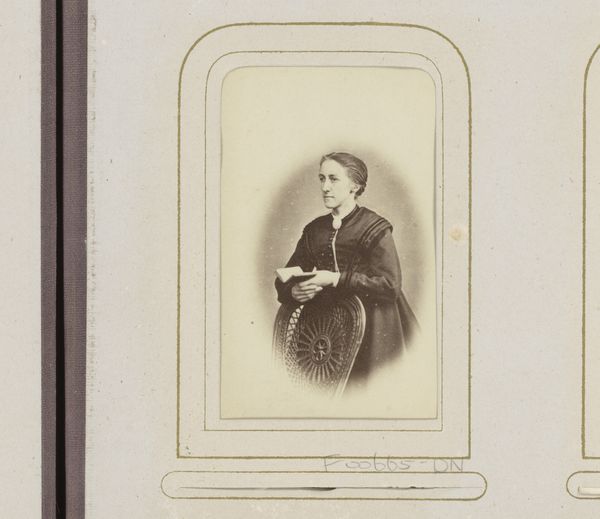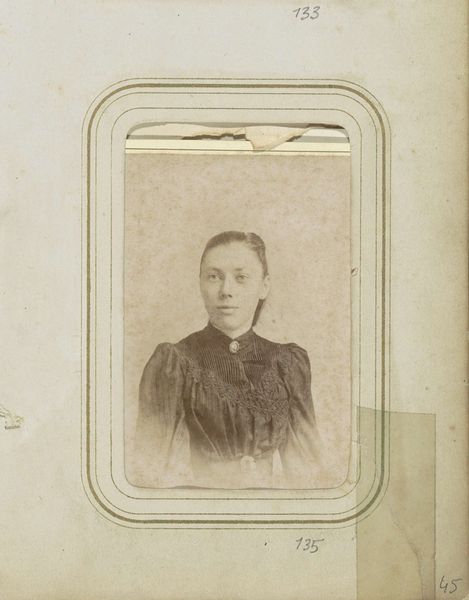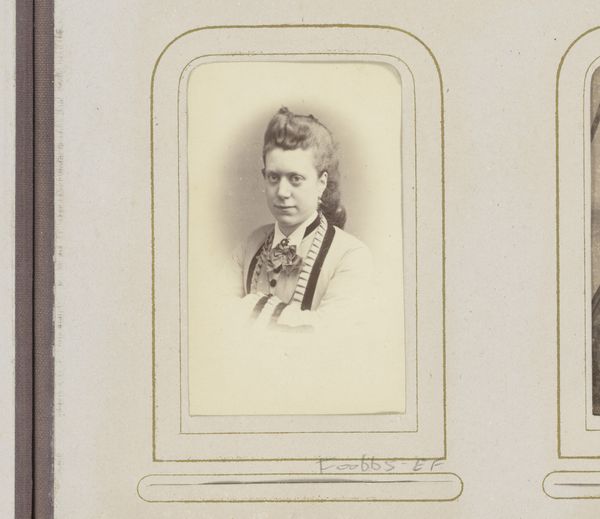
photography, gelatin-silver-print
#
photography
#
gelatin-silver-print
#
realism
Dimensions: height 81 mm, width 50 mm
Copyright: Rijks Museum: Open Domain
Editor: This gelatin-silver print, "Portret van een vrouw" by Jan Goedeljee, dating from somewhere between 1860 and 1890, has a certain reserved elegance, doesn't it? I'm curious, from your perspective, what elements of the photograph stand out the most? Curator: The material reality is what grabs me. The gelatin-silver print process itself was a technological marvel, think about how radically it changed portraiture’s accessibility and the rise of a visual culture centered on bourgeois individualism and the democratization of image-making and consumption. But beyond the science of its production, the image’s presentation in a photo album is also a conscious gesture that emphasizes intimate connection to memories and family. We should look deeper than what is merely portrayed in the photo: consider labor and access! Editor: That's fascinating. It's easy to just see the portrait but miss the broader impact of its creation. The photograph and album existing as objects for display as consumer goods is thought-provoking. What do you suppose would lead someone to produce such an item in the 1800s? Curator: One might create an album of purchased prints to publicly present family relations and wealth through an ostentatious display of fashionable consumerism; each image, like the subject’s garments, speaks volumes. This presentation emphasizes the family's aspiration for status and upward mobility in the era of increased industry and colonialism. Do you get a sense of the historical pressures of gender at the time? Editor: Well, seeing this album does let you imagine someone proudly showing their connections, but yes, the limited roles of women, being enclosed by societal norms. It all certainly affects how one understands this portrait. Curator: Precisely. Reflecting on these works underscores the importance of interrogating materials to comprehend not only the work itself but the society that fostered it. We can then see this image as one component within an entire assembly line, connecting human activity, capitalist structure and industrial innovations! Editor: Thanks; I’ll remember to really look at how material processes are themselves parts of the story and history of art.
Comments
No comments
Be the first to comment and join the conversation on the ultimate creative platform.
